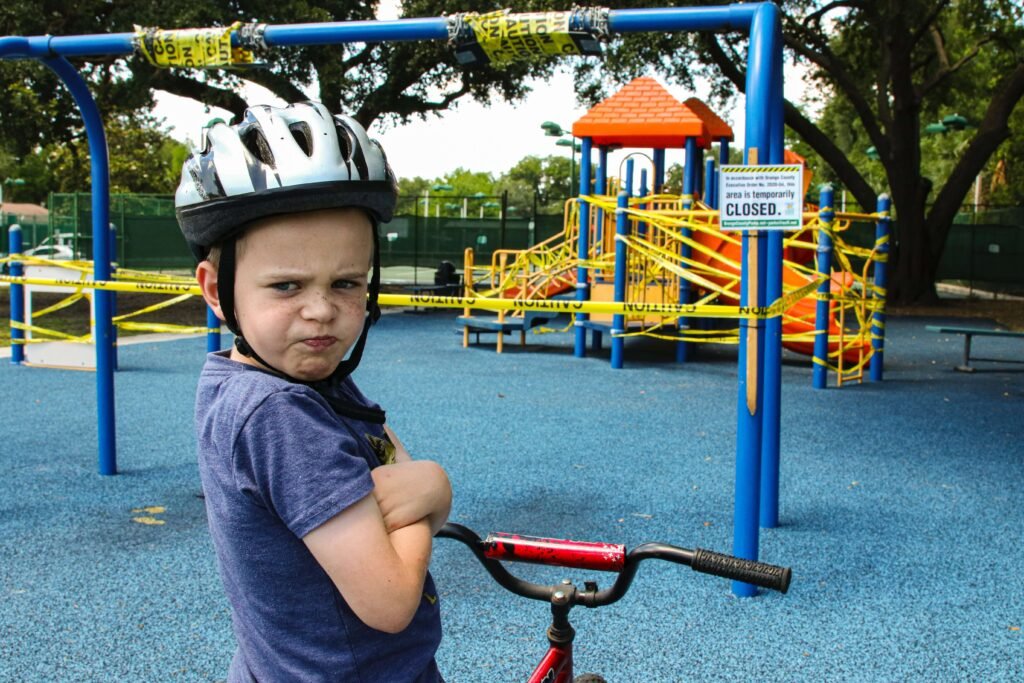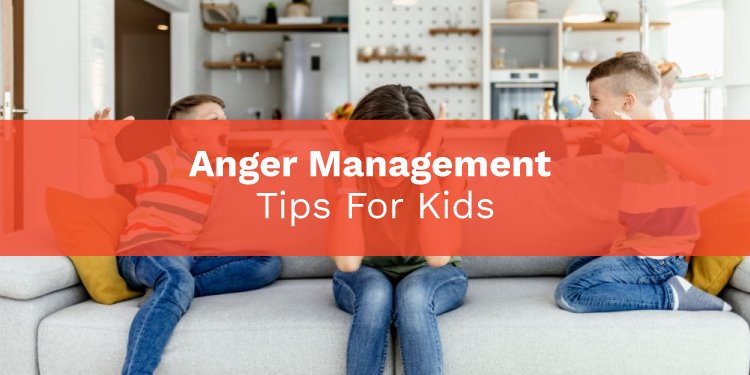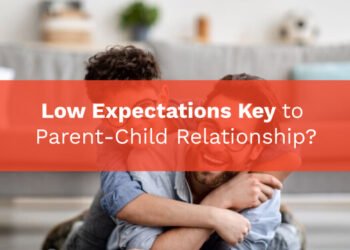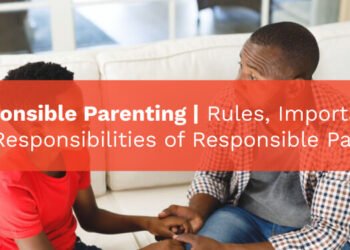Anger is a form of human emotion that we all experience from time to time. Every human being expresses anger in some or another way, and children are no exception. However, many children are unable to distinguish between angry emotion and aggressive behavior. Read this blog to learn some anger management tips for your kids.
Many kids tend to bite their nails, hit, spit, or fight due to their aggressive behaviors. So, as a parent, you need to understand that your kid is having difficulty controlling their anger.
Hence, parents must model appropriate anger management skills in their children. When children don’t know how to manage their emotions, frustration, and anger, it can easily develop into resistance, disrespect, violence, and temper tantrums. You need to plan out different calming activities for your kids.

Is your child losing control and having trouble controlling his anger? If yes, here are nine anger management tips for kids to help calm their anger and emotions.
9 Anger Management Tips for Your Kids
Find and Recognize The Triggers
Recognizing what drives your child’s tantrums is the first step in handling their aggression. You must understand what the cause of your child’s angry outbursts is. Anger can appear at any time, especially in children.
For instance, it could be because they are hungry or exhausted, or frustrated with an assignment. After recognizing their anger, it is equally important to accept your child’s anger. You need to use phrases like “I can see you’re angry” and reassure them that “It’s OK to be furious”. You don’t want them to feel compelled to hide their feelings.
Keep Yourself Calm and Consistent
It’s hard for parents to remain calm when their kids are angry. One of the most effective methods to help your child is to maintain calm. If you are calm and consistent, you’ll be in a better position to educate and follow through with better, more consistent consequences if you’re in control of your emotions.
It is hard to see your child having difficulties, but you need to learn that you must first calm down. By remaining calm, you’re modeling and teaching your child the type of conduct you want to see in him. Harsh or angry replies, whether verbal or physical, tend to worsen a child’s aggression. Hence, it is crucial for parents to remain calm and consistent before teaching their kids how to stay calm.
Build a Vocabulary Feeling
Emotional vocabulary is essential for kids as it is one of the best ways to explain how they feel when frustrated. Because it is difficult for children to explain their emotions, they express them in various ways, including yelling, slapping, and biting their nails.
First, consider the following phrases: angry, upset, enraged, annoyed, agitated, furious, apprehensive, tense, nervous, anxious, irritated, furious, ticked off, dissatisfied. Encourage your child to “speak out his anger” once they have learned emotional words. It is difficult for children to find and employ the appropriate words to express their emotions to others. Hence, building their emotional vocabulary will help them to express themselves and seek the help they require.
Teach Your Kids To Use Time Out
Time out is an excellent technique for your child to separate themselves from a potentially toxic situation and relax. Time out shouldn’t be disciplinary action. You can use time-outs to assist your child in calming down. You should discuss with your kids how to utilize time out. It should be done when your kids are in a happy mood.
Teaching your kids to choose a designated time to be free from all the hustle and bustle of the house will give them a sense of control. It will help them to know how to use it when they need it. Praise your child for using time out to relax, and then spend some time discussing what happened.
For instance, if your child’s anger caused them to ruin and break their crayons, ask them what they could have done better to express their feelings in a less harmful, more useful way.
As a parent, you should be conscious of your tone of voice and project a sense of calm. Praise your kids if they come up with a positive alternative approach.
Use the Calm Down Spot
Create a slow-down zone in your home for your children to relax and unwind. It is one of the most effective calming techniques for children since they can go to their favorite area whenever they feel out of control. You can make your calm-down place more soothing by adding relaxing gadgets and teaching people how to use them.
You can help your kids to have a secure place where they can regain control. You can teach your kids different calm down activities for kids. Teaching your kids a few relaxing items, such as attempting deep breathing, reading books, music, pens, and paper, and encouraging them to use the area to relax is a great anger management strategy.
Offer Consequences When Necessary
It is crucial for you as parents to impose consequences when appropriate. The consequences can be both positive and negative. You should ignore negative behavior, and you should praise positive behavior. For instance, you can ignore small misbehavior because negative reinforcement can cause your kid’s negative behaviors. If your children follow the anger rules, give them positive consequences; if they breach the rules, give them negative consequences.
You can encourage your kid’s positive behavior with praise. Positive consequences like a reward system encourage them to use anger management techniques. Hence, if your child becomes aggressive, be sure to enforce immediate consequences. You need to demonstrate to him that you always carry out these consequences.
Slow Down
When your kids are in a furious moment, slow down and try to stop the tantrum. For instance, whenever your child asks for something, don’t begin by not saying “no” right away. Instead, take a moment to pause and say aloud, “Let’s see what happens.” Let’s have a conversation about it.” It provides you time to consider the request and, if required, how to politely deny or divert your child’s focus away from it.
Slowing down and talking about it helps your youngster know why something is being refused and accept it more willingly. It reassures your child that you listen to him, that you care about his wishes, and that they can trust you to guide him through life’s ups and downs.
Create a Calm-Down Kit
One of the easiest yet powerful calming techniques for your children is to prepare an anti-anxiety toolkit. According to Dr. Dickstein, you and your kid both need to develop a toolkit for self-soothing. When they are scared, afraid, or worried, the calm down kit ideas will help children relax. To get the most out of this kit, you should prepare it ahead of time.
Since it’s impossible to be peaceful and furious at the same time, the things you can do to calm down are slow breathing and relax. You can include stress balls, a kaleidoscope, a tiny massager, lavender-scented play dough, a chew toy, fidget-friendly toys, and more items in the calm-down kit. When putting together an anti-anxiety kit for your children, keep in mind what works best for them.
Draw or Write It
Drawing can be therapeutic for some children. If your kid is angry, then the best way to calm your kid is to encourage them to “draw out their anger.” For this, you can put together a basket with markers, crayons, and a sketch pad so whenever they feel furious, they can draw or paint it out. Painting, drawing, or writing are linked to stress tolerance as it gives the brain something else to focus on other than the stressor.
Some kids like to draw, while others like to write down their frustrations. It is a good way to express themselves. To encourage your kids to write down their stress, give them a journal and a pen or a paper and a pencil, and tell them to go to a quiet place and “write away their anger.” It’s best to write it when you’re angry, then tear it up. It is one of the effective calming techniques for your kids.
Finally:
Anger is a difficult emotion for youngsters to deal with. It may cause them to want to destroy things or say unpleasant things. It’s common for children to have difficulty controlling their aggression at times. Even small kids can be taught to interpret anger differently and maintain or regain control over their emotions with the correct coping skills or techniques.
So use these anger management tips on your kids to calm them down. With your help, your child’s abilities to learn coping skills will improve. But when children struggle to moderate their anger or their anger issues appear to be worsening, it’s essential to seek medical treatment.















